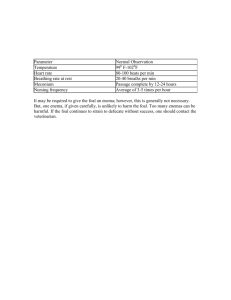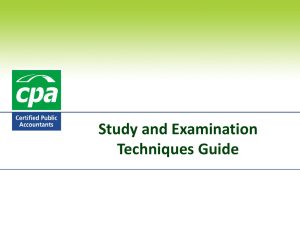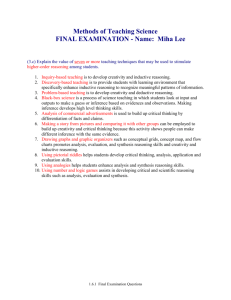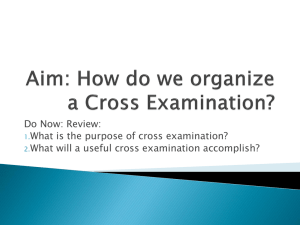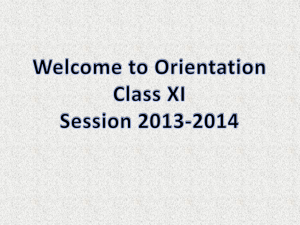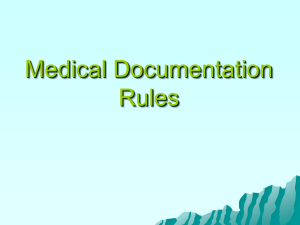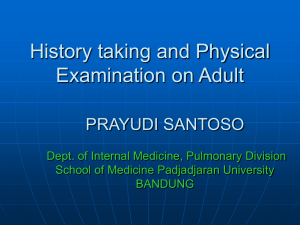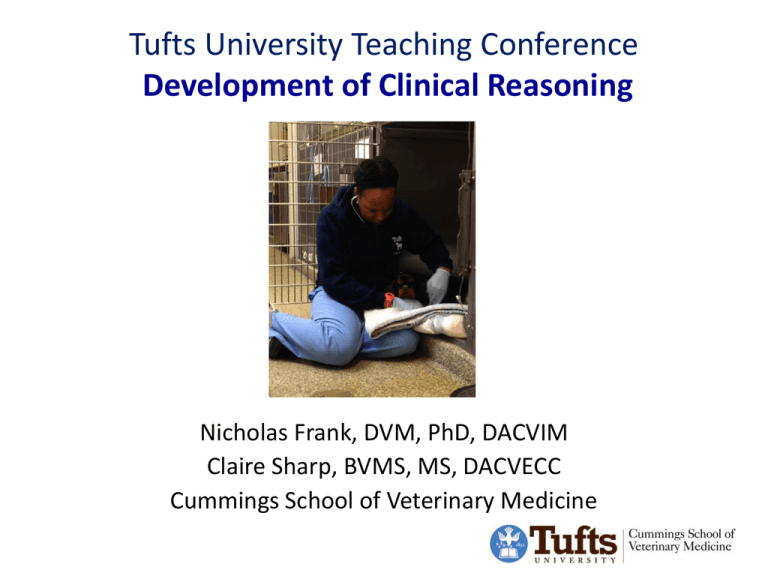
Tufts University Teaching Conference
Development of Clinical Reasoning
Photo of veterinarian
and animal
Nicholas Frank, DVM, PhD, DACVIM
Claire Sharp, BVMS, MS, DACVECC
Cummings School of Veterinary Medicine
Introduction: Medical Education
• Four-year professional degrees in medical sciences
(dental, medical, and veterinary)
• Preclinical curriculum for first 2.5 – 3 years
• Rotate through clinics last 1 – 1.5 years
• Graduate after 4 years and enter practice
• Or move onto internship and residency to become a
‘board-certified’ specialist
• Must prepare students for Day One as a veterinarian
Background of Participants
• What is your background?
• If you are not a dentist/physician/veterinarian, then
use your perspective as a patient or animal owner.
What are you looking for in a new graduate dentist,
physician, or veterinarian?
Step 1: Identify and state the problem
• Identify the problems relating to clinical reasoning
that you might encounter in your students (or ours)?
– Cannot ‘play the odds’ yet; some diseases more
common in certain breeds/age
– Focus on the most recent system covered in class
– Equally weighting uncommon and common
diseases
– Cannot prioritize problems and identify most life
threatening
Identifying the Problem
• How does the way that we teach students contribute
to deficiencies in clinical reasoning?
– Systems approach
– Common and uncommon diseases not
differentiated
– Instructors are expert learners and omit
information for novice learners
– Assumptions made that students can recognize
the more important problems
Development of a Clinician
Student
Novice Learner
More concerned with
vocabulary and content
Intern
Resident
Practitioner
Specialist
Expert Learner
More concerned with
processes
Workshop Outline
Steps of the Process
1.
2.
3.
4.
5.
6.
Identify and state the problem
Determine general and specific needs
Consider philosophical approach to course
Develop course objectives and content
Assess student learning
Modify/adapt the course
Step 2: Determine general and specific needs
• General needs
– For instructors to explain their thinking
• Specific needs
– To recognize clues from the signalment (age,
breed, sex), history, and physical examination
– To prioritize problems
– To learn how to weight differential diagnoses
– To know when a finding is outside the ‘box’
Outside the Box
• ‘Common diseases happen commonly’
• Can the novice learner recognize when a finding is
outside the box?
Acknowledgement: Dr. John Rush
Step 3: Philosophical approach to course
• Take a few minutes to discuss the philosophical
approach to the course you are designing.
– Who should teach the course?
– What will you try to teach?
– How much can you achieve in one semester?
– What will your style be?
– How will you organize classes?
– Pass/fail or graded?
Step 4: Develop objectives and content
• What would you teach?
– Four introductory lectures with whole class
– Divide class into four groups
– Block of four cases
– Two hours per case
– Specialist teaching the class
– Whiteboard
What is clinical reasoning?
“The thought process that guides practice” (Rogers,
1982)
The Clinical Reasoning Process
Veterinarian-clientpatient contact
Data collection
- History
- Physical examination
+/- Initial diagnostic tests
Knowledge of
manifestations of
different diseases
Diagnostic decision
Is the diagnosis
sufficiently certain?
Knowledge of the
effects of different
treatments
Yes
Treatment decision
Observation of treatment
result
No
Presentation
The foal of Patch, a 5-year-old Quarter Horse mare,
presented to the TCSVM emergency service last night
at midnight for not standing or nursing after being born
at approximately 10 AM. The foal was given one liter of
plasma and tube fed colostrum prior to presentation.
The owner reported that there was a "red bag" birth.
Red bag delivery
Step 5: Assess student learning
Dilemma: Is a MCQ examination appropriate for a
course about the reasoning process?
Take a few minutes to discuss the pros and cons of
different methods of assessment and make
recommendations for this course
Assessment in VM342
2013
• First session included a pre-course assessment – a
case-based examination that Dr. Sharp went over in
class and provided the key
• Final examination: Two case-based questions (one
large animal and one small animal) graded by the
two course directors
2014
• Addition of peer-graded midterm
• Switch to peer-graded final examination (ExamSoft)
Step 6: Modify/adapt the course
Modifications for 2014:
1. Attendance
Eliminated ‘one free pass’
2. Unfamiliar examination format
a. Introduced a mid-term examination (acted as a
formative assessment)
b. Asked the same questions in class: ‘List the five
most common causes of inappetence in horses’
Step 6: Modify/adapt the course
Modifications for 2014:
3. Burden of exam marking
Peer grading
4. Attention to this course versus others
[Graded course]
5. Need to refine methods of assessment
Use of ExamSoft for examinations
Questions
Dr. Claire Sharp
Assistant Professor
Department of Clinical Sciences
claire.sharp@tufts.edu
Dr. Nick Frank
Professor and Chair
Department of Clinical Sciences
nicholas.frank@tufts.edu




